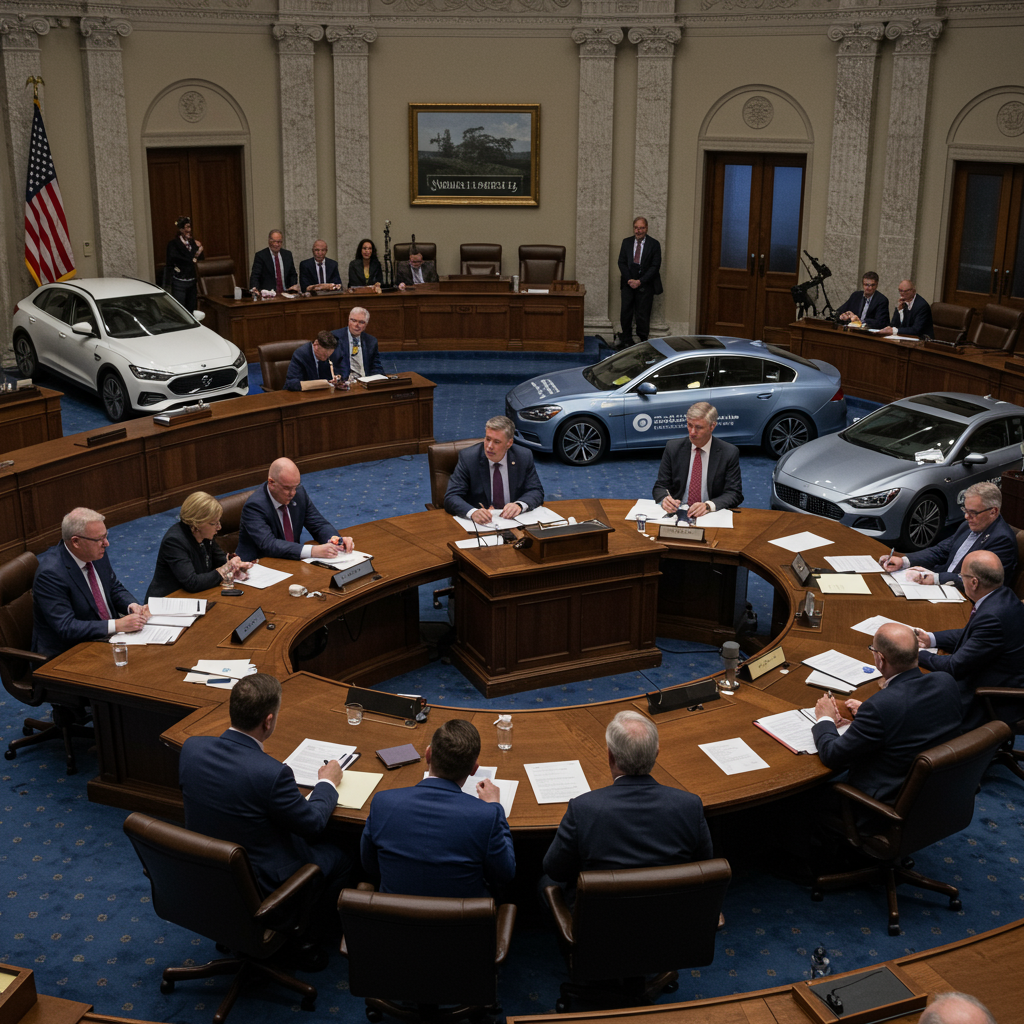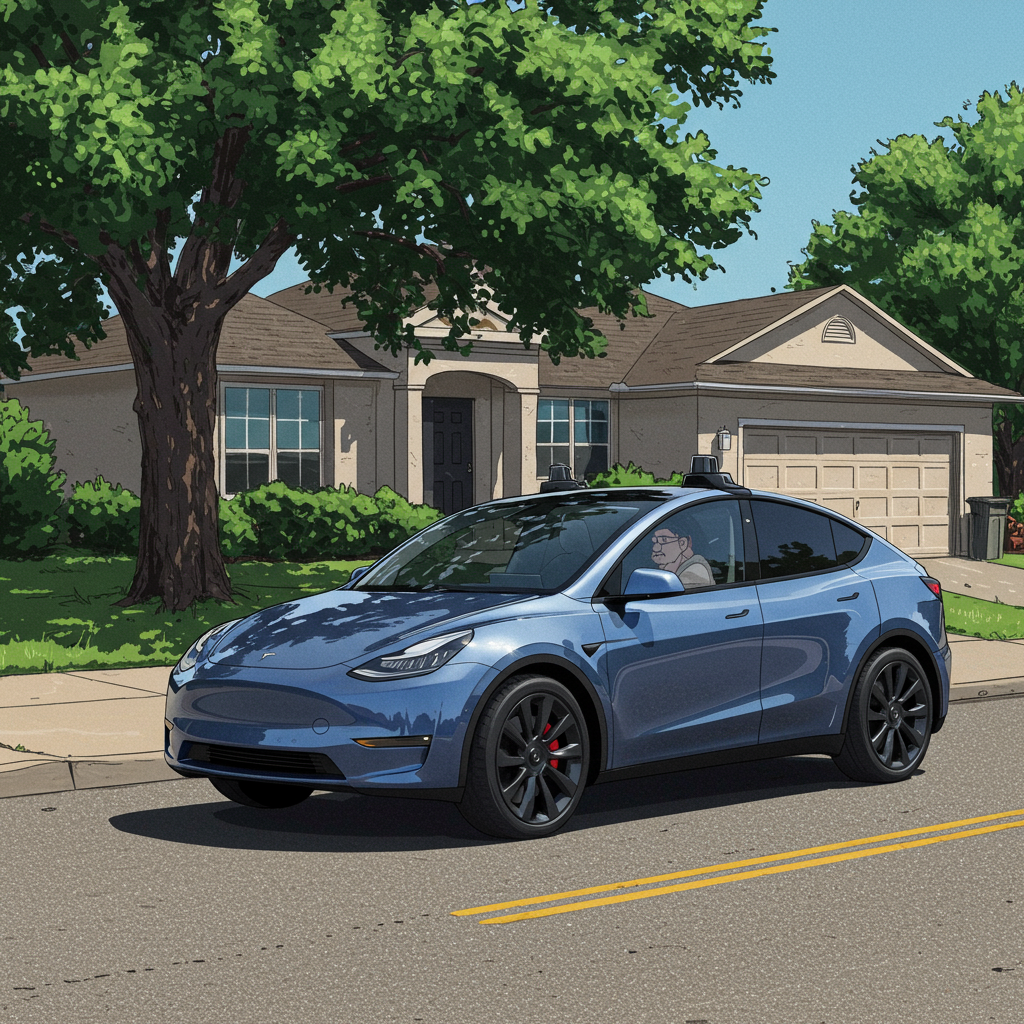A significant legislative battle is unfolding in the U.S. senate, centered around a massive tax and spending package dubbed the “‘One Big, Beautiful Bill.'” A key point of contention within this sprawling proposal is the future of the federal tax credit designed to incentivize the purchase or lease of electric vehicles (EVs). Unlike a version passed by the House of Representatives that proposed a phased expiration, the latest draft from the Senate introduces a potentially abrupt and much earlier termination date for these popular EV incentives.
Under the Senate’s current proposal, the federal tax credits for buying or leasing EVs would sunset on September 30th. This hard deadline is set just three months from now, dramatically accelerating the timeline compared to the House bill, which envisioned the credits continuing for some automakers until late 2025 and others through 2026. The potential for such a rapid withdrawal of the incentive has ignited strong reactions across the automotive industry and among policy advocates.
The Uncertain Fate of the EV Incentive
The “One Big, Beautiful Bill” is far from finalized. It’s currently navigating a complex legislative path in the Senate, including intense debate and votes on potential amendments. Even if the Senate passes its version, it must then be reconciled with the House’s differing bill, a process fraught with political negotiation and potential roadblocks.
Adding to the uncertainty are procedural hurdles. The nonpartisan Senate parliamentarian, responsible for ensuring bill provisions comply with specific rules for streamlined passage (often through reconciliation), has already flagged issues within the bill. For instance, a proposed change to how states can tax Medicaid providers, intended to help offset costs, was ruled non-compliant. While Republicans indicate they will work to rework such provisions, these rulings complicate the timeline and highlight the fragility of various components within the bill. This broader legislative chaos underscores that the EV tax credit’s fate is tied to the success or failure of the entire, contentious package.
Stakeholders React to the Proposed Cuts
The prospect of an early end to the EV tax credit has been met with a mix of dismay and celebration among different groups.
EV proponents express significant disappointment. The Zero Emission Transportation Association (ZETA), for example, voiced strong opposition. Their executive director, Albert Gore III, stated that supporting the bill as written would essentially abandon the critical goal of establishing the United States as a globally competitive leader in the future markets for minerals, battery production, and electric vehicles. He argued that the incentives are crucial for building out this domestic industry.
Conversely, organizations aligned against government subsidies for clean energy cheered the potential termination. The Trump-aligned American Energy Alliance celebrated the draft, with its president, Tom Pyle, describing extending what he termed “green giveaways” as “shortsighted and neglectful” at the expense of American taxpayers.
Interestingly, auto dealers, who previously held skeptical views on EVs during the Biden administration, have emerged as vocal proponents of keeping the tax credits longer. The National Automobile Dealers Association (NADA) is actively lobbying Congress, pushing for what they call a “reasonable transition period.” NADA argues that an abrupt repeal would severely disrupt the car market and create unnecessary confusion for consumers navigating their purchase decisions.
Used vehicle market leaders like Carmax and Carvana have echoed these concerns. They joined an open letter advocating for the credits to continue for “at least the next several years.” They specifically highlighted the potential for sudden elimination to cause significant disruption in the used auto market. The current tax credit includes a crucial provision offering up to $4,000 for used EVs, explicitly designed to make electric transportation more accessible and affordable for lower- and middle-income car shoppers.
Arguments Against the EV Credits
Arguments against the EV tax credits often center on perceived fairness and cost. Senator Bernie Moreno (R-Ohio), a former car dealer and a prominent critic of EVs, articulated part of the Republican argument on the Senate floor. He raised a hypothetical scenario involving a billionaire leasing a high-end electric vehicle like a $500,000 electric Rolls-Royce. He criticized the idea that “Democrats gave that billionaire a check for $7,500,” asserting that providing such substantial checks to individuals leasing expensive cars is misguided and benefits the wealthy, calling the situation “sick.”
This criticism often targets the “lease loophole,” where the tax credit for leasing an EV does not carry the same income or vehicle price restrictions as the credit for purchasing an EV. This disparity means that affluent individuals leasing luxury EVs can indeed qualify for the full credit, a point frequently cited by opponents.
Broader Impacts on Clean Energy Policy
The potential elimination of the EV tax credit is not an isolated change within the Senate’s ambitious bill. The draft indicates potentially more radical cuts to other “green” provisions compared to the House version. The Senate is reportedly considering not only removing tax credits for wind and solar projects but also introducing new taxes on these renewable energy sources. These taxes would apply unless companies can prove they do not use components manufactured in China, a provision reflecting broader geopolitical and trade concerns intertwined with energy policy.
Furthermore, the Senate draft might eliminate all fees imposed on automakers who fail to comply with fuel economy rules. Environmental groups warn that such a change would effectively render those regulations toothless, removing a key enforcement mechanism for improving vehicle efficiency.
However, not all rollbacks proposed in the House bill survived the Senate’s drafting process. A proposed new yearly fee on electric vehicles and hybrids, present in the House version, was absent from the latest Senate draft. Similarly, a proposal to eliminate the Environmental Protection Agency’s rules for tailpipe emissions standards was also dropped, suggesting some clean energy regulations may be preserved within the final package.
The legislative process remains fluid and unpredictable. The fate of the EV tax credits, alongside these other significant energy and environmental policies, hinges on ongoing negotiations, amendment votes, and the eventual reconciliation process between the House and Senate. The proposed September 30th deadline for the EV credit highlights the urgency and high stakes surrounding this element of the complex tax and spending debate.
Frequently Asked Questions
What is the Senate proposing for the EV tax credit end date?
The latest draft of a large tax and spending bill under consideration in the U.S. Senate proposes ending federal tax credits for purchasing or leasing electric vehicles (EVs) on September 30th. This is significantly earlier than the version passed by the House of Representatives, which had proposed ending the credits for different manufacturers in late 2025 or late 2026. The Senate’s proposed date is just three months away from the time of this report (June 30, 2025).
How would an earlier end to the EV tax credit impact car buyers and the market?
Auto industry groups, including new and used car dealers, warn that an abrupt end to the EV tax credit could disrupt the market. They argue it would cause confusion for consumers planning EV purchases and could negatively impact the used car market, particularly affecting the $4,000 used EV credit designed to help lower- and middle-income buyers. Ending the credit sooner could make EVs less affordable for many potential buyers.
Why do different groups disagree on ending the EV tax credit early?
Disagreement stems from differing views on the credit’s purpose and impact. EV advocates see the credit as essential for encouraging EV adoption, supporting the growth of a domestic EV and battery industry, and achieving clean energy goals. Opponents view the credit as an unnecessary government subsidy (“green giveaway”) that burdens taxpayers and, as argued by some lawmakers, unfairly benefits wealthier individuals, particularly via the “lease loophole” which lacks income or price caps.
Conclusion
The potential for the federal EV tax credit to end abruptly on September 30th, as proposed in a draft Senate bill, represents a significant turn in US clean energy policy. While proponents argue the credit is vital for market growth and global competitiveness, opponents call for its termination. The fate of this incentive is deeply intertwined with the success and final form of a large, complex legislative package currently facing significant political and procedural challenges in Congress. Stakeholders across the automotive sector are closely watching the outcome, which could dramatically reshape the landscape for electric vehicle adoption in the coming months.
Word Count Check: 1150 words



